Locations below ground level
Locations below ground level must have sufficient capacity to support the weight of the entire installation plus the concrete foundation it is to rest on. If there is doubt regarding the supporting capacity of the location below ground level where the foundation is to stand, a qualified technician must be contacted to determine the type and size of the concrete foundation
Fixed concrete block
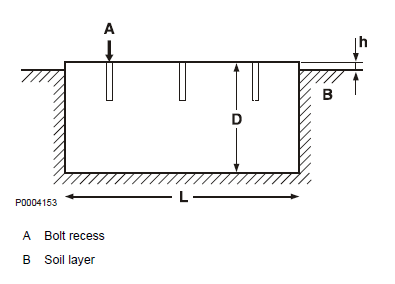
The fixed concrete block is a proven method and for certain installations the most suitable. In these cases the generator set's underframe is bolted directly to the concrete block. Concrete block size is recommended to extend 400–500 mm (16–20") beyond each side of the assembled generator set. The surface of the block is usually above bed level so that the difference “h” is 100-200 mm (4–8") and forms a pedestal. The depth of the concrete block is calculated in the following manner:
Generator set total weight
D = –––––––––––––––
d x W x L
D = Concrete block depth in meters
d = Concrete density in kg/m3 (use 2400 kg/m3)
B = Concrete block width in meters
L = Concrete block length in meters
After the concrete depth required for installation weight and stability has been determined, check that the ground is able to bear the total weight (engine plus concrete block) and withstand the forces concerned. It may not be possible to reach a firm ground layer, e.g. hard clay, compacted sand and gravel or rock, without digging unreasonably deeply. In such a situation the load must be spread over a large area on a concrete slab.
Floating concrete block
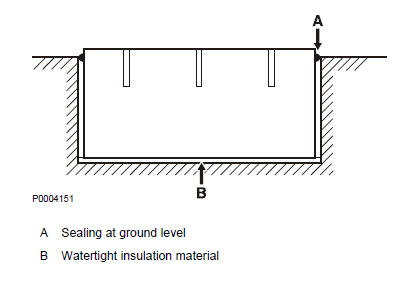
A floating concrete block is an effective alternative to a fixed concrete block. In order to determine the size of the concrete block, apply the same calculation as for a fixed concrete block. The block is cast beforehand in a wooden mold. There must be an air gap of approximately 25 mm (1") around all four block sides. The gap at ground level must be sealed with a non-bonding material to keep out dirt and water, but nevertheless also provide flexibility. Place watertight insulation material beneath the floating block. This insulates the generator set and the block, and significantly reduces vibrations to the surroundings. All equipment connected to the generator set, e.g. exhaust systems and fuel pipes, must be installed with flexible connections.
Installation procedure on concrete blocks
When the concrete block is poured, recesses must be made for the mounting bolts i.e. anchors or similar. Place removable wooden boxes at each mounting bolt location. The size of the box must be adapted to the size of the bolt used for installation. Remove the boxes when the concrete has almost cured. Make sure the upper surface of the concrete block is fairly even and fault free.
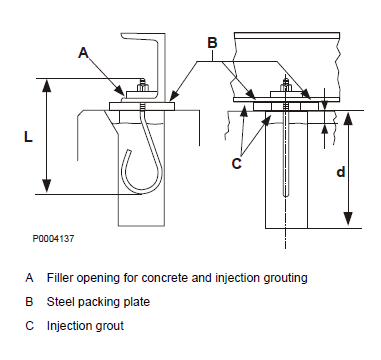
The illustration shows the method with a normal anchor bolt. The depth d must be slightly greater than bolt length L. This is so that the bolt can be dropped into the hole for the grouting, and so that the installation can be rolled into place without the bolts being in the way. Install a steel packing plate at each mounting point above the hole and on each side of the bolt.
Fixed mounts
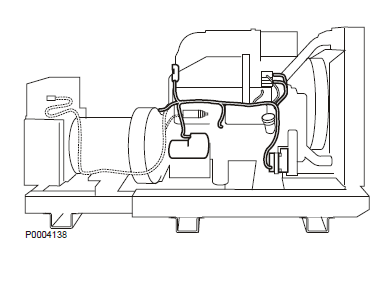
Fixed mounts are normally used on engines installed on a frame as illustrated. The driven unit may be a generator, a water pump or a compressor.
Vibration insulating mounts
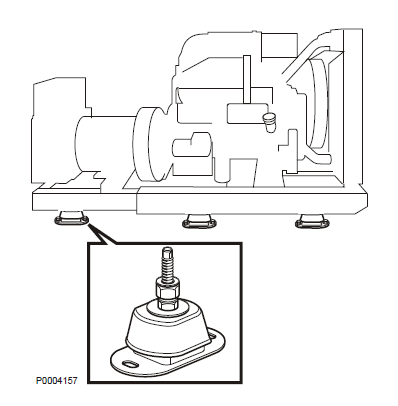
In order to reduce noise levels and absorb vibrations transferred to the installation foundation, the frame is equipped with flexible mounts as illustrated. The flexible mounts must be placed so that the load is distributed evenly. The location of the mounts is determined by calculating the total weight and center of gravity of the installation, then the mounts are arranging evenly around the unit's center of gravity. The number of flexible mounts is normally between 4 and 6. It is important to know the engine's critical rpm and the load that will be operated at the intended installation so that the correct flexible mount hardness and layout is chosen.
Location of flexible mounts
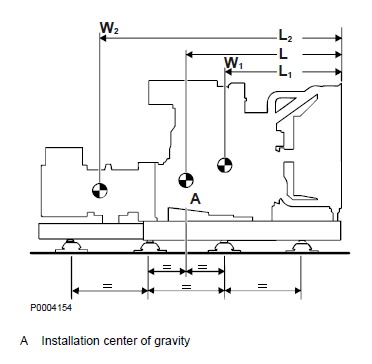
(W1 x L1 ) + (W2 x L2 )
L = ––––––––––––––––––
(W1+ W 2)
L1 = The distance from the installation's front to the center of gravity for the engine and radiator
W1 = Engine and radiator weight with coolant
L2 = The distance from the installation front to generator center of gravity
W2 = Generator weight
L = The distance from the installation front to the entire installation's center of gravity
To be noted when selecting flexible mounts
On the whole, a flexible mount is preferable to other configurations. A flexible mount is optimally designed if the natural frequency from the vibration system, of which the engine and mount elasticity form part, is at least 40 % lower than the engine's lowest occurring frequency. A low natural frequency requires soft flexible mounts. However, such mounts have the disadvantage of allowing significant deflection from external forces that may occur with inclined installations or shock loads. On 4 cylinder engines it is practically impossible to install a fixed connection between the engine and the underframe when taking into consideration impulse forces of the second order. A prerequisite for correct flexible mounts is that the foundation must be significantly stiffer than the flexible elements, otherwise the foundation would act as a extra spring.
The elements must be arranged so that they bend when they are affected by the forces that arise during operations. There must be sufficient free movement between the engine and the chassis. Flexible mounts that fit Volvo Penta engines can be found under “Order specification-optional equipment” in the Sales Support Tool, Partner Network for each engine type. In order to withstand vibrational deflections from the flexible attachment, all pipes, cables and lines must also be of flexible design. Rubber mounted radiators are acceptable if the engine is mounted fixed. (If both the engine and the radiator are flexibly mounted, there is a risk of the fan coming into contact with the fan ring). When the engine, or the engine and transmission, is installed on the flexible mounts, make sure that the underframe is level, parallel and even. Also make sure that the mount hole patterns are correct and the holes sufficiently large in order to avoid uneven load stress and twisting of the mounts. Twisted rubber mounts affect sound dampening and vibration characteristics negatively and drastically shorten the service life of the rubber.
Uniform load on mount elements
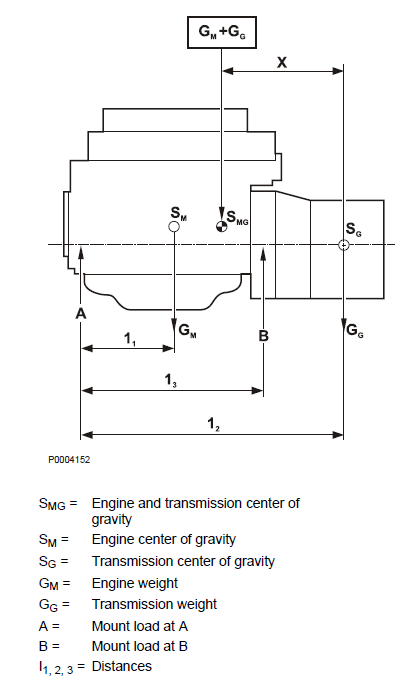
Locate the mount elements so that the load is distributed evenly. This is achieved by balancing the distribution of the forces that act on the mount elements by changing the distance between the mounts or by changing the number of mounts. In most cases, the best alternative is to alter the number of mounts. If engine and transmission centers of gravity and weights are known, it is possible to calculate the forces acting on the mounts as illustrated. The following result for mount load:
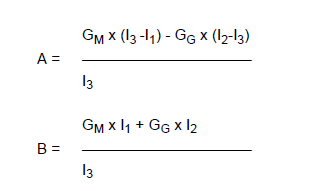
The location of the total center of gravity SMG (engine and transmission weight) in relation to the transmission center of gravity, can be calculated using the following equation.
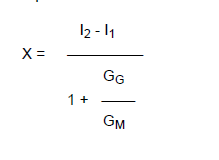
For More Volvo Engine workshop information, please visit
Arrangement and Planning, Volvo Diesel Engine Room
General Information of Volvo Industrial Engines
Copyright © Guangxi Dingbo Generator Set Manufacturing Co., Ltd. All Rights Reserved | Sitemap
Update cookies preferences